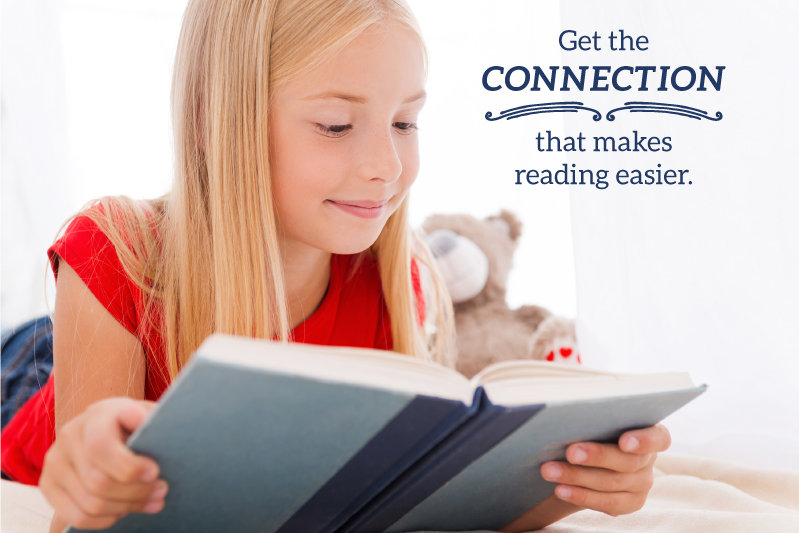The Missing Connection: Why Reading is Still So Hard for Your Child
When a student struggles with reading, extra help typically focuses on phonics, or sounding out words, and spelling rules. Unfortunately, many students, even those who have had months of extra help, continue to struggle with grade level text.
Perhaps they sound out a word eventually—but it is slow and labored. They may take so long to sound out the word that they miss the meaning of the text altogether. Or, they may substitute words when reading a paragraph. For example, they may read ‘production’ instead of ‘perfection.’
For many individuals, even those who have received extensive reading support, sight word recognition remains difficult. They may attempt to use phonics strategies for most words— such as reading /pee/ /oh/ /plee/ for the word ‘people.’ When they finally conquer a word, they might not recognize that same word when they encounter it in the next paragraph.
Also, while a student may be able to spell words phonetically, they are unable to remember the visual patterns of words (orthography). For example, they may spell the word “friend” as “f-r-e-n-d.”
Why? What is the missing connection for these students?
An important aspect of reading and spelling is symbol imagery, which underlies both phonological and orthographic processing. Symbol imagery is the ability to visualize letters in your mind’s eye. This connection of imagery and language is necessary for sounding out new words, as well as quickly recognizing letters and common words.
Students who read fluently, and are able to self-correct their errors, have strong symbol imagery.
Traditional reading help focuses on how to sound out words as well as reading and spelling rules. While these activities have value, they do not affect the necessary imagery-language connection. They do not change how a student is processing language. This is why reading may still be difficult for your child.
We help make this connection for students at our learning centers. Our teachers’ language stimulates an individual’s symbol imagery. For example, when a teacher says, “What letters do you see for ‘top’?” she is prompting the student to picture the letters t-o-p. By applying this skill to phonological and orthographic processing, reading and spelling skills are improved.
Improved symbol imagery changes how a student reads and spells, regardless of their age or struggle with literacy—including those with a previous diagnosis of dyslexia.
Learn more about about how symbol imagery can change your child’s ability to read: https://lindamoodbell.com/program/seeing-stars-program






